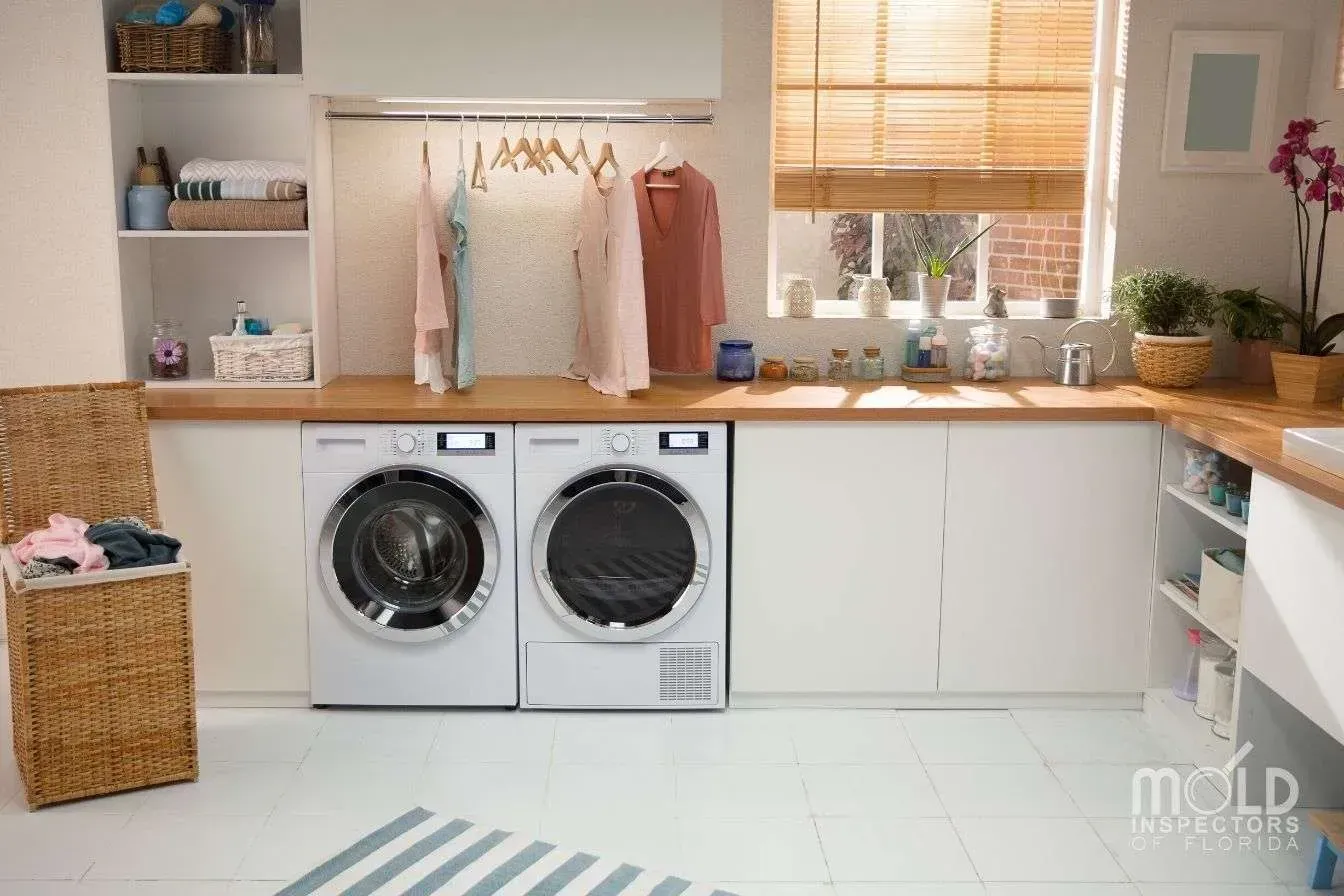Laundry Room Mold: Inspecting and Preventing Mold in Your Washroom

Mold presence in laundry rooms should not come as a surprise. As most people are aware, mold growth occurs in moisture ridden areas, and a laundry room is no exception. Wet clothes in the washer are easy to be forgotten overnight, or in some cases, longer. Leaving these clothes unattended can cause mold and mildew to grow on clothes. Opening a washer to smell a pungent aroma on garments that have been sitting too long can be credited to mold and mildew growth. Remember the sound of your mother yelling not to leave the wet clothes in the hamper? She was concerned about mold growth. Due to the humidity levels that arise in a laundry room, and the presence of damp clothing, how do you properly prevent mold?
Where to Inspect and How to Prevent
Regular home inspections for mold are essential to staying on top of laundry room maintenance. Simple checks by the homeowner can save headaches in the long run. Running through a simple checklist at least twice a year is better than spending thousands of dollars in cleanup, remediation, and replacement.
Walls: Examining walls, both easily visible, and those hidden by the appliances, are important to check for mold growth. Mold can grow inside the drywall due to the moisture build-up in the laundry room. Walls with piping exposed can become especially vulnerable to mold. If you observe discolored spots or signs of leaks, this could mean mold growth.
Prevention: Regularly inspect for signs of water damage and mold growth. Clean up any spills or leaks promptly and assist incomplete drying of the water damaged area.
Washer and Dryer: Don’t let the names fool you, a washer can still be unclean with mold, and a dryer can even obtain moisture. Inspect inside the appliances for off-putting smells or discoloration. If your linens still smell after being washed, the machines may have mold or mildew growth on the inside. For front-loading washers, mildew, moisture, and debris can build up on the auto-lock features and rubber seals. Machines also have the potential to bust a leak inside the appliance.
Prevention: Place a drip pan under the washer to monitor for potential leaks. Perform regular maintenance cleanings for both the washer and washer door. Keep a timer on your phone to remember to move over the laundry to prevent mildew in the washer and dryer. Keep the lid of the washer open when not in use to assist in drying out the bin and preventing inner mold growth.
Around The Room: Regularly inspecting the floors for signs of leaks can give you ample time to act. Whether it be the washer, the utility sink, or a backed-up drain, there are several areas in which water damage can affect a laundry room. Checking the hoses and piping are also another beneficial tool in prevention. Over time, loose connections in the tubes may occur, especially if the washer becomes unbalanced.
Prevention: Pull the washer away from the wall and observe the hoses for drying or cracking. Secure any loosened tubes. Run a wash cycle while the appliance is pulled out and watch for any leaks in the tube. Pour a few cups of water down the floor drain and be sure it is working correctly. Hidden drain blockages can be problematic when an unforeseen circumstance arises.
Prevention
Adding a dehumidifier into the laundry room goes the extra mile in preventing mold and mildew growth in your laundry room. When purchasing, be sure to purchase a dehumidifier that has a hose attachment, and not a collection bucket. Collection buckets you must dump continuously, hoses can secure to the drains or utility sink and ensure the dehumidifier is continuously working.
If you find signs of mold or mildew in your laundry room, call us at Mold Inspectors of Florida to help investigate the origin and severity of the mold safely.


